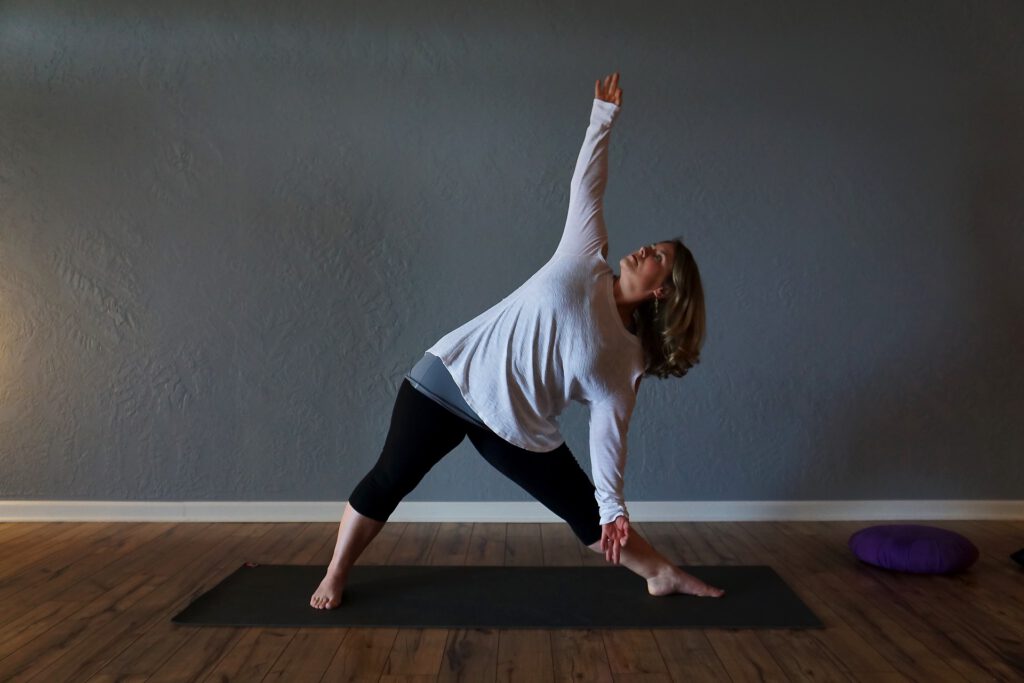Why and how to exercise at home in later years

Physical activity of any sort is highly recommended for everyone at any age. Even when gym workouts seem far behind us, keeping moving is important.
Exercise is cited as an important tool in protecting hearts, joints and our immune systems. It can help diabetics with their blood sugar levels, promote better sleeping patterns and increase blood flow to the brain for better information management. Exercise is also a great mood lifter. And being fitter, stronger and having a good sense of balance is invaluable in avoiding the consequences of falls and loss of confidence.
There’s even some evidence that exercise can help ward off some of the respiratory problems associated with Covid-19.
Such are the benefits that the World Health Organization recommends 150 minutes a week of exercise a week for the older population.
So where can we find trusted advice and ideas for physical activity for older people that can be enjoyed at home?
Home workouts
Getting outside for a walk is great for aerobic conditioning and an opportunity to see the world outside the home. But even at home there are plenty of opportunities to get the joints moving by walking around the house or apartment. Experts suggest walking around the home while on the phone, getting up from your seat during every ad break on television, and practising stair climbing as some good places to start.
You may have come across the notion of functional fitness. This a group of exercises that can help people with everyday activities, and can include squats, lunges and pulling/pushing movements. There’s no need to invest in dumb bells and yoga mats to take exercise to this next level and start working muscle groups. It’s regularly suggested that you can swap tins for weights and be generally inventive about equipment.
For those who are more ambitious, CrossFit for the over 60s takes functional fitness a step further, adding in exercises such as Olympic weightlifting, powerlifting and gymnastics.
A word of warning though. For anyone exercising at home, it’s important to warm up the muscles and then stretch after the exercise. Without stretching there will almost certainly be pain! The NHS has a 5-minute wake-up workout which could be used as a stretching programme at the end of exercise.
The YouTube revelation
There have been exercise programmes available on the internet for a while, but the lockdown during the coronavirus emergency has produced a very welcome broadening of what’s available on YouTube and other social media platforms for all ages, and often free of charge.
Some sessions are streamed live, which means anyone can register and join in, using a technology such as Zoom. That’s great if the potential participant is comfortable with the technology (and it can be difficult at first), but you do have to be available at the set time. On the other hand, it does mean you are working out with other people at the same time, which can be nice to know if you’re otherwise isolated.
Alternatively, there are growing numbers of exercise routines available on platforms like YouTube that are there for the duration. Once you’ve found them, you can choose when to use them, and stop and start them if you need a break.
Joe Wickes, for example, is an online phenomenon as a PT instructor who has been wildly successful in broadcasting exercise routines from his home to a variety of age groups. He has currently produced three programmes for older people, some of which are quite challenging, but as always, participants can take it at their own pace. These sessions are currently available on YouTube for users to pick up at their own convenience.
The Royal Voluntary Service normally runs community-based activities for older people, but during the coronavirus lockdown instigated a ‘virtual village hall’ with live Facebook and recorded YouTube classes that include health and wellness classes, including yoga and meditation.
It’s not vital to stand to exercise. There are options for anyone who wants to sit, such as chair pilates, which focuses more on strength and balance than aerobic activity.
There are many more online guides to exercise for middling to older people – just search on over 50s fitness.
Not everyone gets the internet
Many older people are not and never will be comfortable online. While video-based tutorials are great for those who can find their way through the technology, it’s useful to know there are other ways of learning how to exercise safely at home.
For an easy alternative that you could send to your parents, the University of Manchester has produced a download and print guide to keeping well at home that includes exercise suggestions.
Find out more
If you found this article useful, you may like to take a look at:
Image by StockSnap from Pixabay

